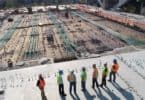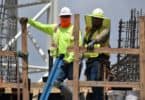Planning engineers work with engineering teams to ensure that projects are finished on time. They create plans and strategies, assess operational and production requirements, monitor projects and performance, and ensure communication channels are operational. Planning Engineers increase overall project execution and can work in a variety of fields.
When hiring managers interviewing planning engineers, they look for candidates with a strong understanding of engineering principles as well as excellent organizational abilities.
Use the Planning Engineer interview questions below to determine your prepare yourself before your next interview.
Top Planning Engineer Interview questions along with answers
Q1: What is a Baseline Project Schedule?
A baseline is an approved programme by both parties which is used as a benchmark to measure the progress of a project.
Q2: How much duration is a milestone activity normally equal?
All types of milestones have zero durations
Q3: What is the difference between Free Float & Total Float?
Free Float: the amount of time we can delay an activity without affecting the early start date of its successor activity.
Total Float: the amount of time we can delay an activity from its early start date without delaying the project finish.
Q4: What is the CPI?
It’s a Cost Performance Indicator and it evaluates the progress of works in the sense if the project is under-budget, over-budgeted, or on track. The formula for CPI is: CPI =EV/AC
Q5: What is the SPI?
It is the Schedule Performance Indicator and indicates the performance of work is completed to the baseline schedule. The formula for SPI is SPI= EV/PV
Q6: What is a different % complete type in Primavera P6?
- Physical Percent Complete
- Units Percent Complete
- Duration Percent Complete
Q7: What is the different duration type in Primavera P6?
- Fixed Units
- Fixed Units/time
- Fixed Duration & Units
- Fixed Duration & Units/Time
Q8: What are the different types of activities in Primavera P6?
- Task-Dependent: In this type assigned resources are scheduled based on the activity’s calendar itself.
- Resource Dependent: In this type, the assigned resources are scheduled based on assigned calendars.
- Level of Effort: This type of activity goes with dependent activities like administrative issues.
- Start Milestone: This is designated for the start of a major phase or stage of a project. A milestone that has zero duration. It is just like a flag.
- Finish Milestone: This is designated for the finish of the major phase or stage of a project. A milestone that has zero duration. It is just like a flag.
Q9: How does Primavera P6 calculate total float?
Total Float = Late Start – Early Start
or
Total Float = Late Finish – Early Finish
Q10: What is the difference between the recovery schedule and the revised schedule?
Recovery schedule: Here we maintain the same project completion date as in consented baseline but modification could be done to those activities which are yet to start or progressing by crashing and resource acceleration
Revised schedule: Here we slipped the consented project completion dated and we plan for activities that are yet to start or progressing
Q11: How many baselines are permitted in a project and what is the basis of the project’s success or failure?
A project must have a minimum of one project baseline
Q12: What are the Key Performance Indicators – KPIs?
A KPI is a type of performance measurement for a particular activity where it is engaged. KPI’s are defined by keeping the “What matters most” factor. Careful study and analysis must be defined because it differs from organization to organization as a critical KPI for you may not be of any interest to other organizations of the same type. It’s a very diverse area. Examples Rubber liner, Concrete work, Machine failures for a specific duration, plantation, number of hires/fires, training, etc.
Q13: What is the difference between Retained Logic and Progress Override?
When using Retained Logic, the activity that starts out of sequence can not be completed until its predecessor has finished. The remaining duration of the out-of-sequence activity is scheduled to start after the predecessor is scheduled to finish. Retained Logic follows the logic of networks.
When scheduling with progress override, Primavera P6 ignores the relationship between the activities and schedules any remaining duration of the “out of sequence” operation from the date of results.
Q14: What is the DCMA 14-point schedule assessment?
Well, it’s simply determining whether the schedule is well-built – whether it adheres to a set of best practices that are considered important for the success and manageability of the project. Such best practices have been broken down into a list of 14 Points controls Check.
Q15: How can you perform the updates?
- An excel sheet should be created and includes the Trades, Floors, etc, and a cell for the progress % input.
- The progress % input must be entered by the Project Managers/Construction Managers and the planning engineer must validate these progress percentages.
- The data should be entered into the programme update
Q16: What is the concurrent delay?
When two events or more of delay on the critical path are occurring at the same time, one affecting activities on the Contractor’s risk and the other affecting activities on the Employer’s risk.
Q17: How can you create a good schedule?
1.Schedule the activities to reflect the project’s contract scope of work.
2.Dates must be in accordance with the contract.
3.Meets the contractual requirements /milestones.
4.The Activity durations should be reasonable: activity duration must be calculated based on
the quantity of work and resources available to be applied to the work.
Q18:How will you load the manpower resources into your schedule?
Manpower loading is based on the productivity rates of my company productivity rates, we have to calculate the required man-hours for each B.O.Q item by using this formula :
Required Manhours = QTY / (Productivity Rate)
Q19:What are the involvements of Planning Engineer and vital Role in Project
Management?
Since Planning Engineer involves directly in project management activities, project leadership makes decisions concerning the development of plans, and how the work process has broken down & control how manages. Track, review, forecast & give inputs on the status of the project and product. Furthermore planning engineer should inform the project team where s/he recognizes and potential risks.
Q20: What is the kick-off meeting?
The kick-off meeting is normally the first meeting of all major Stakeholders including the Project Manager with his team and the Owner’s representatives. Here, we discuss high-level overall plans, things like how we are going to execute and once things get clearer as the project goes forward then we do rolling wave planning. These meetings can be conducted at the new phase that starts during the execution of the project also.
Q21: What does MEP mean?
MEP in Construction means Mechanical, Electrical and Plumbing works
Q22: What is a Six Sigma Control Plan in Construction?
A control plan Six Sigma is a method for documenting the functional aspects of quality control that will be implemented to ensure that quality standards for a specific product or service are satisfied.
A well-organized control plan can help companies in monitoring growth, avoiding process decline, and ensuring that problems do not reoccur.
Q23: Why is the Planned Value important in Project Management?
Planned Value in project management is important because it represents the planned value of work that should have been completed at a specific time during the project period.
Q24: What are the skills required for a planning engineer?
- Planning Engineer should have planning and project management skills.
- Strong multitasking abilities.
- Strong analytical, critical, and logical thinking skills.
- A sound understanding of safety protocols.
- Ability to focus under pressure and meet deadlines
- Scheduling Software (Micorsoft Project, Primavera P6, etc.)
- Calculating Optimal Material requirement, Manpower Requirement (of various trades) & Machinery Requirement
- Plan for the budget required for the project and create various budget heads to document and monitor the expenses
- Create Cashflow analysis (ie., Expected billing (cash inflow) vs Expected cash outflow)
- Coordinate with various departments like Engineering, Procurement, Contracts, quality & Commissioning Departments.
Q25: How can you describe the process of planning and scheduling?
As a planning engineer, you will be in responsible for creating schedules and planning the use of resources for engineering and construction projects. When interviewing for a planning engineer position, you may be asked how you would approach project scheduling and resource planning.
To answer this type of question, you must first understand the project’s requirements and then establish a schedule outlining the tasks that must be done and the resources that will be necessary. You must also analyze any possible risks or obstacles that may effect the project’s schedule. You will need to monitor progress and make changes as needed to keep the project on track once you have set the schedule.
See Also
Civil Engineer Interview Questions and Answers
Master Schedule in Project Management









